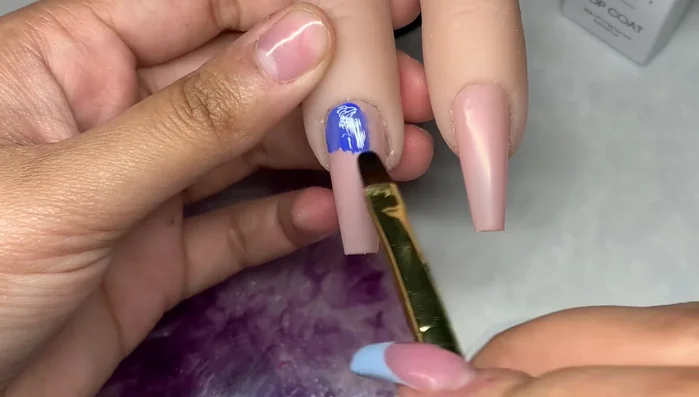Nail art has evolved from a simple manicure to a captivating form of self-expression, with intricate designs showcasing creativity and skill. The key to achieving truly stunning nail art lies in mastering the tools of the trade, and none are more crucial than nail brushes. From delicate floral accents to bold geometric patterns, the right brush can transform a simple polish application into a miniature masterpiece. The variety of brush shapes and sizes available can seem overwhelming, but understanding their unique functions is the first step to unlocking your artistic potential.
This guide will demystify the world of nail brushes, exploring the different types, their applications, and essential techniques for handling each one. We’ll take you through a step-by-step process, demonstrating how to create several popular nail art designs using different brush types, empowering you to unleash your creativity and achieve professional-looking results at home. Prepare to elevate your nail art game!
Safety Guidelines
- Always clean your brushes thoroughly with nail polish remover after each use to prevent color mixing and prolong brush lifespan. Failure to do so can ruin your brushes and your nail art.
- Handle your brushes gently. Avoid harsh scrubbing or bending the bristles as this can damage them and affect the precision of your strokes. Store them properly in a protective case or upright.
- Use a high-quality nail polish remover that is acetone-free or low in acetone to avoid damaging the bristles of your brushes. Acetone can dissolve certain brush fibers.
Methods: Ombre Nail Art with Applicator and Ombre Brushes
Tools Needed
- Ombre brush
- Round applicator brushes (small and large)
- Young Nails gel paints
Step-by-Step Instructions
Base Coat Application
- Paint the first half of the nail with the round applicator brush, mixing the gel paint well beforehand.

Base Coat Application Ombre Application & Blending
- Use the tip of the ombre brush with light pressure to feather the second color down from the top, creating an ombre effect.

Ombre Application & Blending Curing and Second Layer (Optional)
- Cure the first layer (60 seconds). Apply a second layer for a better blend if desired.

Curing and Second Layer (Optional)
Tips
- Ensure the gel paints are runny for better control. Too thick consistency will make it difficult to blend.
- Use very light pressure with the ombre brush; otherwise, you will drag the color too far.
- Clean your ombre brush thoroughly between color applications.
Methods: Creating Straight Lines with Liner Brushes
Tools Needed
- Acetone
- Angled liner brush
- Long liner brushes (Madame Glam, Glitter Bells)
- Young Nails black gel paint
Step-by-Step Instructions
Creating Straight Lines with a Liner Brush
- Use the long liner brush to create long straight lines across the nail in one stroke, maintaining good balance and minimal pressure for thin lines.

Creating Straight Lines with a Liner Brush Correcting Mistakes
- Use the angled liner brush dipped in acetone to clean up any mistakes.

Correcting Mistakes
Tips
- Maintain good balance and control your brush for precision. Less pressure creates thinner lines.
- Take your time to avoid mistakes; rushing can lead to uneven lines.
Methods: Intricate Details with Detailer and Dotting Tools
Tools Needed
- Dotting tool
- Micro detailer brush (Young Nails)
- Small detailer brushes
- Young Nails gel paints
Step-by-Step Instructions
Intricate Detailing with Detailer Brushes
- Use small detailer and micro detailer brushes for intricate shapes, lines, and outlining.

Intricate Detailing with Detailer Brushes Dotting Tool Techniques
- Employ the dotting tool for creating dots, cheetah print designs, and cloud nail art.

Dotting Tool Techniques
Tips
- The micro detailer brush excels in outlining and creating incredibly thin lines.
Methods: Filling in Spaces with a Square Brush
Tools Needed
- Square gel brush
- Striping brush
- Young Nails gel paints
Step-by-Step Instructions
Create Guiding Lines
- Create guiding lines with the striping brush.

Create Guiding Lines Fill in Spaces with Square Brush
- Use the square brush to fill in the spaces between the lines, leveraging its sharp corners and straight edges for clean results.

Fill in Spaces with Square Brush
Tips
- The square brush's straight edges help straighten lines and fill in spaces neatly.









